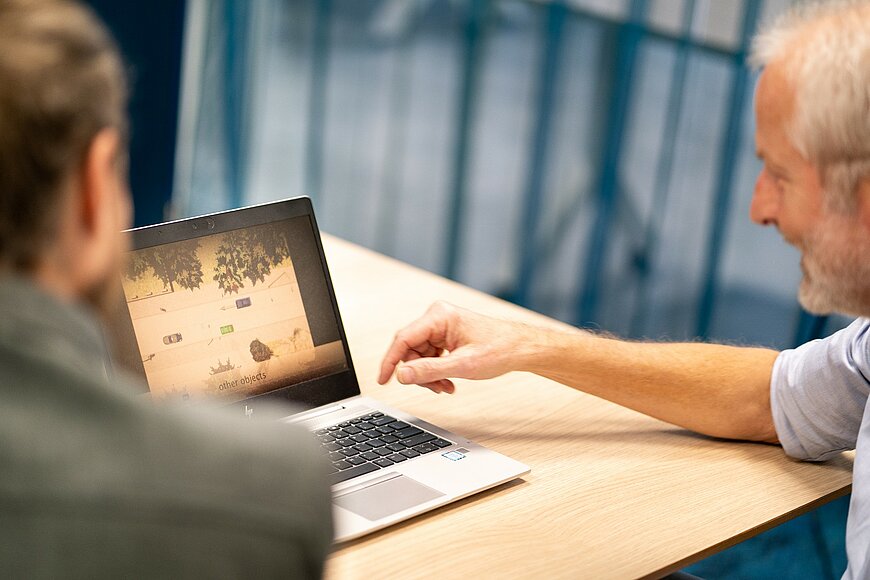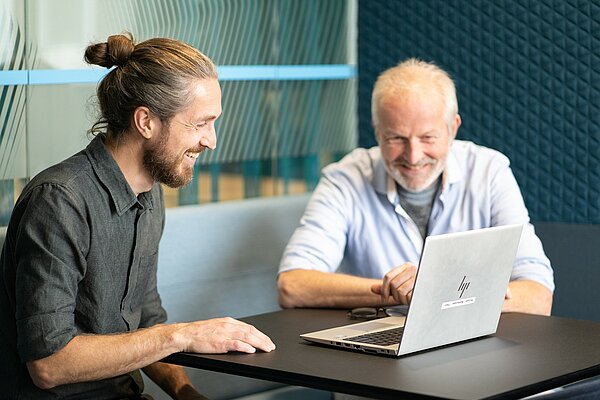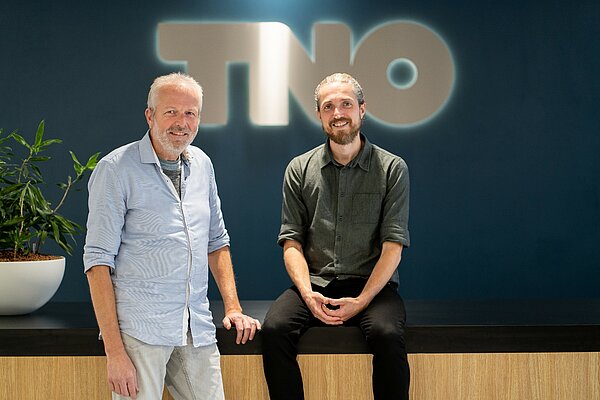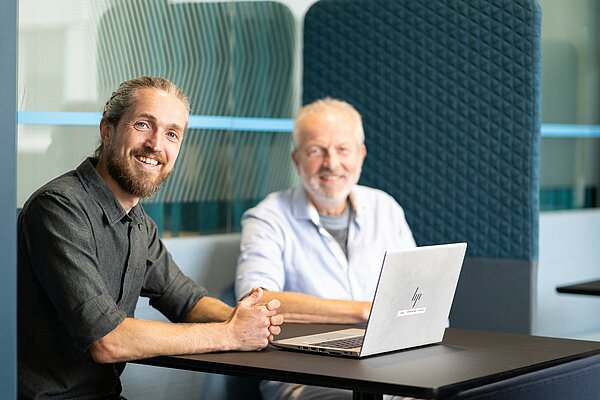AI is going to revolutionise a lot of aspects

Please introduce yourself!
My name is Rutger Beekelaar and I am a project manager within TNO. I make sure we do what we agreed, that we have happy customers and a happy team.
Ten years ago, we started testing autonomous driving cars. Before that, there was a test track set up on the N270 between Helmond and Eindhoven. We programmed those cars manually. We instructed them to stay a few metres from the predecessor and to slow down if this limit was compromised, or not to cross the two lines of the carriageway. Everyone loved it, but of course it is a simplified representation of the world. There was no mention of children crossing or a ball rolling into the street. If you want a car to drive completely autonomously, you can't manually programme against that. AI can have a lot of impact here by being able to learn on its own. By adding data and knowledge, AI learns to deal with conditions. This is going to cause a turnaround in a lot of ways.

My name is Jan-Pieter Paardekooper and I am a researcher at TNO. I am responsible for the content of most AI projects at the Integrated Vehicle Safety department. I also work one day a week for Radboud University as a research fellow, linking fundamental research to what we do in practice at TNO. I find it interesting and special, to contribute to adding complex behaviour to computer systems.
For me, the definition of AI is "the ability of a computer to perform complex tasks". The first chess computers ran on rules that were programmed. In recent years, we are seeing computers that can learn well. Using examples, they are able to recognise patterns and then apply them. That is an essential part of Artificial Intelligence.
In addition, we can link learning ability, to knowledge. People learn things, but we also store knowledge. That knowledge helps us to reason; the moment we see a species that we have never seen before we almost immediately know the way it moves. It walks, flies or swims. This is part of logical reasoning. Within AI, if we couple the learning part with knowledge so that the computer can reason, we call it hybrid AI.

What innovation have you developed?
Within the Fabulos AI project, together with the Municipality of Helmond and Brainport Development, among others, we worked on making a shuttle bus smarter using AI. The shuttle bus was programmed using rules. As a result, the behaviour displayed by the bus was not very complex; the bus drove along a mapped route and was not allowed to deviate from it. Also, the shuttle stopped for any obstacle it encountered. In itself, this is obviously safe, because if a child runs, you have to stop. What we noticed in practice was that the vehicle could not distinguish between obstacles. Even leaves on the road were seen as objects for which the bus stopped.
The route also passed a school. The shuttle was programmed to slow down near this school, but it did so even on weekends when there were no children. Not convenient, in other words. The tests taught us that safety is important for the acceptance of an autonomous driving vehicle, but efficiency also plays a big role.
The next step was to make the bus a little smarter with a technique within AI that we call Situation Awareness. This allowed the shuttle to decide for itself whether it was competent enough to drive automatically in a given situation, or to surrender to the steward. We used a simulation environment for this, placing a camera on the bus that could recognise objects. If it saw something big like a parked car it would stop. If he saw some leaves or a branch on the road, he was able to weigh himself whether he could drive over it. The starting point was that driving on was only permissible if the situation was 100 per cent clear. If the risk was low, it could continue driving autonomously.
The virtual bus is now also allowed to temporarily deviate from the virtual rails. It can make its own decision to avoid a parked car when nothing is approaching, and it plans its own route. The bus is driving autonomously, but always in an explainable way. We know why it makes certain decisions because it does so within the frameworks we create. It cannot deviate from that. Within this self-driving system, of course, nothing can go wrong. Technically, we can do a lot, but ultimately humans decide whether to accept it as a means of transport.
In what way does Artificial Intelligence contribute to solving global challenges?
The idea with the shuttle bus came about to make mobility more widely available and accessible. The idea is that AI supports people in their tasks.
The development from the first PC, to our current laptops and phones went at lightning speed. Using them has become natural. With Artificial Intelligence, we are at such a similar tipping point. Google uses AI to decide what is most relevant to you, but AI can start helping us in many ways. One example, of course, is autonomous driving cars, but there are also gains to be made in healthcare. AI fairly easily links anonymised patient data to medicine use and side effects. A doctor can thus quickly see what effect medication will have on a particular patient. AI is also applied to search and rescue robots. For example, these robots enter burning buildings, check for people and can call for help or evacuate.

What will the resident of Brainport and the Netherlands notice from this innovation?
We are working towards autonomous automatic public transport becoming safe, fast and comfortable. Cheaper and widely available, making it easier to leave the car behind. Reservation apps can make this process even more accessible. Then you won't want two cars on your doorstep anymore.
We are still in the testing phase now, but soon we need to be able to produce autonomous transport affordably, with reliable components. We need many parties to do that. RDW is going to think about it, the infrastructure has to facilitate it and users have to accept it. It is up to us to demonstrate that something is technically possible; the next step is adoption. Ethics also play a role here, because who is liable if there is no driver? We still have quite a few issues to resolve.
What is your advice for other organisations and entrepreneurs to get started with AI?
First of all, it is useful to know what problem you want to solve. AI is often seen as something new that we need, and want, because it is hip. The question is not so much whether it will become big, but mainly when. As an entrepreneur, try to be open to change and AI, because you are going to have to deal with it anyway.